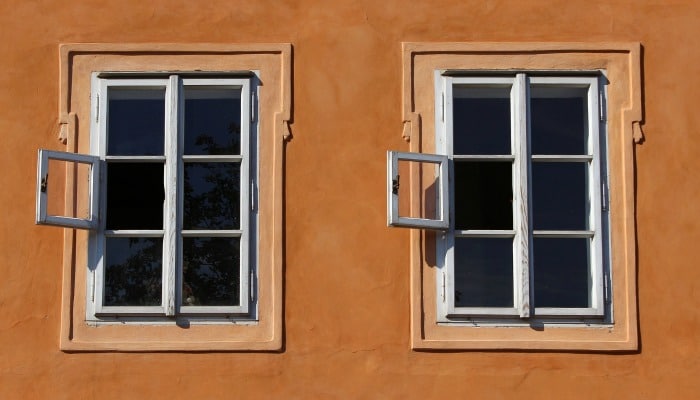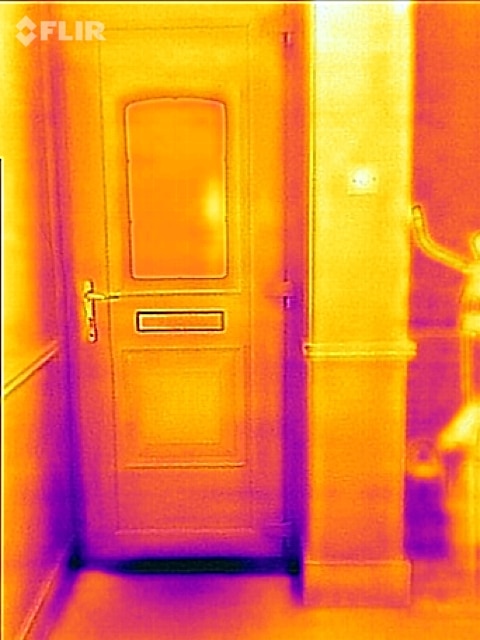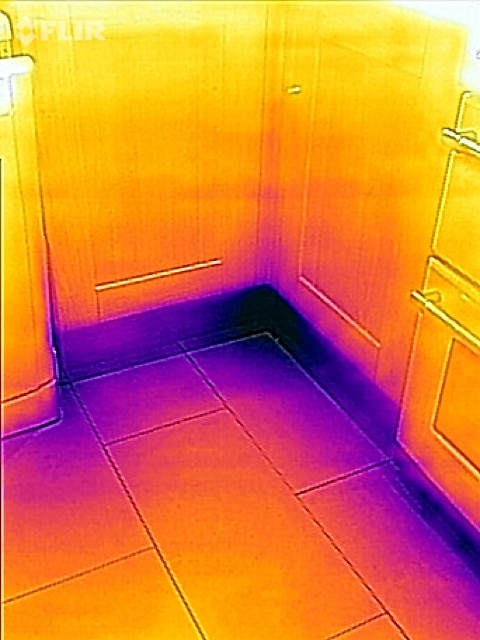
£10 sign up bonus: Earn easy cash by watching videos, playing games, and entering surveys.
Get a £10 sign up bonus when you join today.
Join Swagbucks here >>
I hate having to pay money for nothing, and that’s the cold hard fact that heat loss can have on your finances.
There are times when we’ve been sitting on the sofa at night and can feel a breeze. A coldness comes from somewhere, but we always struggle to find where it comes from.
We’ve been able to find a few culprits easily.
Letterbox
Our post-person is very good, and after delivering our mail, they put the outside flap back down again. However, leaflet droppers (usually pizza or Indian restaurant flyers) who post leaflets later in the evening push the menu through but leave the outside flap wide open.
This makes our house freezing, especially when the wind is fiercer than usual or if it’s raining.
If we feel a breeze in the evening, our first port of call is to open the front door and check if the flap is open. Closing it from the outside will put an end to the coldness straight away.
There are draught excluders you can buy for a letter box as well which may well help to cut heat loss if you’re feeling the cold coming from there.
Under doors
If we put our hands to the bottom of the kitchen door, we can quite often feel a cold breeze coming through. It may not be massive, but it does make us feel colder in the evenings. I’m not sure where this breeze has come from originally, as the doors and windows are shut, but it really makes us cold.
Rather than buying a purpose-made draught excluder (although I’ve recently seen them quite cheap in Poundstretcher, and I’m sure other shops do them at a good price), we’ve made our own with an old pillowcase filled with odd socks and outgrown holey kid’s clothes.
This has worked wonders to keep the chill at bay.
But what else?
So these places have been easy to work out where the coldness is coming from. They are easy to find, and making a small change makes things warmer.
But why do we still feel the cold?
Trying to spot where the heat loss spots are is really difficult for the naked eye. We can walk around using our hands to feel cold, but we can’t find anything concrete.
However, rather than just trying to guess for the cold spots, I’ve been sent a new piece of tech to test, which uses thermal imagery to detect the cold – fancy stuff!!
FLIR ONE – Thermal imaging camera
Everest sent us a FLIR ONE thermal imaging camera to help us find the cold spot in our home, so we could improve heat loss – and save more money on our heating bills!
This bit of kit is just a small camera that fits into the bottom of your iPhone, iPod or iPad.
So, with the camera in hand, we went around our house, taking pictures of likely culprits to find where our heat loss could be coming from!
Cold spots at the front door
I was actually quite surprised to see cold spots on our front door. The yellow shows warm, and the blue shows the cold spots. You can see that the outside of the letter box is slightly cold, but the bottom of the door is really cold!
We can look to do something about this on colder nights, as I didn’t realise we were losing heat there!

Cold spots in the kitchen
We have ceramic-style tiles in the kitchen, which are naturally cold anyway. We try to wear socks, slippers or shoes when we are in there to keep our toes warmer.
When cooking or using the sink, Naomi and I have often said that the floor feels colder, not quite being able to work out why. Now, thanks to the FLIR ONE, we can see the problem.
This shows a big cold spot coming from under the kitchen sink cupboard. On inspection outside, there is a hole in the wall between some of the pipes. If we look to block this up from the outside, it should reduce our heat loss. We’ve now also found out why there is a breeze coming from under the kitchen door.

Other uses for FLIR ONE
For a bit of fun, we also tried to play hide and seek one evening. With all lights off, we used the FLIR ONE to try to find people in a pitch-black room, and the results were amazing! It almost felt like a was a CIA spy or James Bond hunting for bad guys as they stood out like a sore thumb!
I could see this bit of kit coming in really handy if you lost your pet in the back garden and needed to find them in the dark.
How to stop heat loss and save energy costs
Here are some quick-fire ways to stop heat loss in your home and some other ways to reduce the costs of your heating bill:
- Heavy-duty curtains will also stop heat from leaving your windows.
- Whilst this isn’t possible in all houses, wall installation can be very useful in houses built from the 1950s that didn’t use proper internal filling. You can buy expanding foam insulation that can be inserted into the walls. This will cost you around £700, but you can save up to £275 each year!
- Turn the thermostat down by one degree.
- Install double-glazed windows, which will reduce the amount of heat that leaves your windows. Double glazing cost can vary, so be sure to get a few quotes.
- You can buy foil sheets to slip down behind your radiators. They reflect heat back into the room so that you aren’t just heating the ceiling and the other wall! Considering using normal tin foil – take a look at the disadvantage of foil behind radiators.
- Make your own door draft promoters with uncooked rice, dried beans or unneeded clothes and socks.
- Plastic wrap the windows in winter – You can buy plastic double glazing that clips into your windows for around £5 a window which will minimise heat loss effectively.
- Fit door seals to stop any excess heat loss.
- If you don’t have damp problems, you can put a thin layer of insulation beneath your floorboards in all the rooms of the house to prevent heat loss.
- Insulate your attic to stop heat loss from your roof.
So what ideas do you have to reduce heat loss in your home?
- Where can I use my Blue Light Card? Discounts list 2025 - 1 January 2025
- Best paid surveys to earn money online in 2025 - 1 January 2025
- £18 million in Tesco Clubcard vouchers about to expire – use them or lose them! - 12 November 2024

Sloopy says
We still struggle with cold areas despite cavity wall insulation and having changed all glazing panels to A rated ones and having lined curtains.
Buying everything on a discount, free postage etc. I bought some cheap fleece throws (not the bulky ultra-thick furry ones) and some curtain tension rods. I used these to make my ‘window cosies’ which hang close to the glass. Cut to size of window, plus allowance to make a ‘tube’ at the top, through which I put a tension rod. Used those for a couple of years. Popped them up in the evening, took them down in the morning.
A little older and creakier, last winter I experimented with doing away with the tension rod at an 8ft window and replacing with white command hooks at intervals, and brass curtain rings sewn onto the top of the throw. It worked a treat. It was easier to put up, easier to stash away during the day. The ‘extra’ fabric I gained by unpicking the tube means I now have an extra amount of fabric on the window cill. This helps form a seal that stops hot air from radiators escaping up to the windows. I always tuck my curtain up on to the cill at night.
Conclusion – yes, worth doing. I am currently converting my cosies to this method before I put them away for the summer. I can’t how long it takes to save what you spend, but for me anything that means the house warm quicker is a bonus. Suitable for use in rented accommodation because command hooks are removable – no holes have been made etc. This year I had trouble reaching up to top of my bedroom window. I found a cheap platform from the days of step aerobics, and now have that by the window permanently. It gives me a nice wide and safe base for doing my ‘cosy’ and for opening the window and who knows I might even start ‘stepping’ when the neighbours aren’t looking. Double whammy!